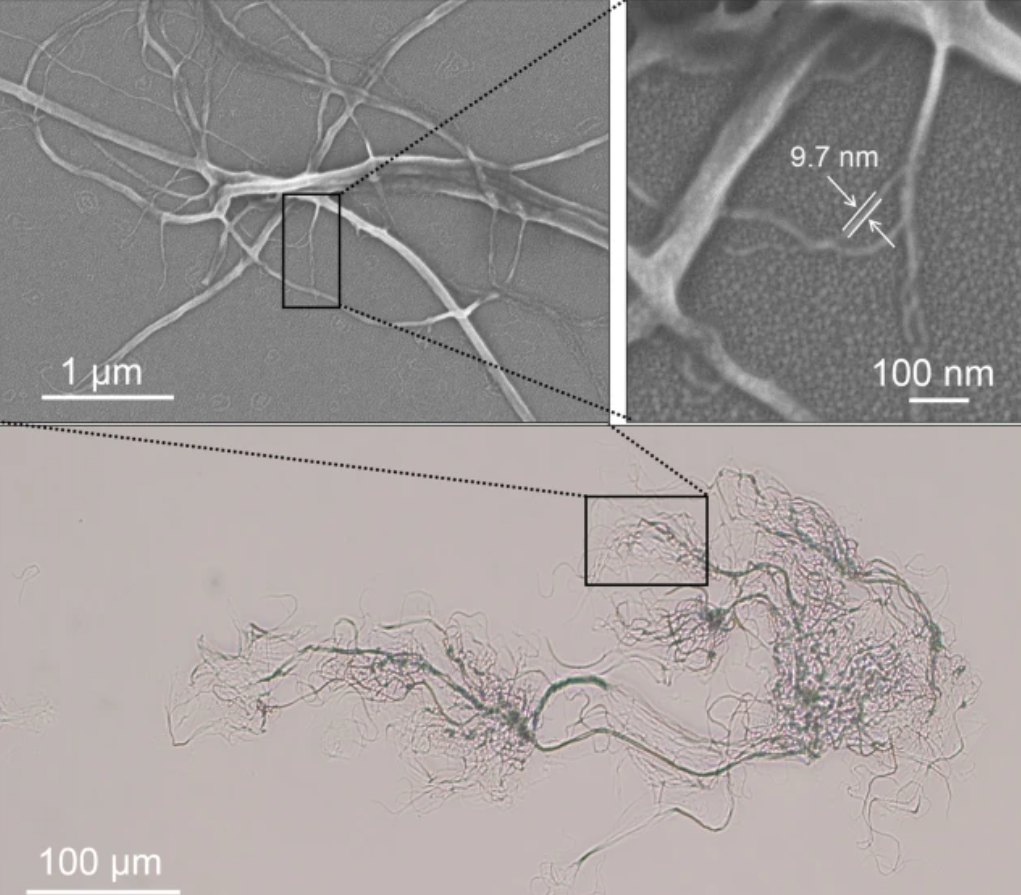A team of researchers from North Carolina State University have developed a new class of high-performance, seaweed-based hydrogels for 3D printing.
Dubbed the self-reinforced homocomposite hydrogel (HHG), the extrudable material is created by integrating different sized networks of identical alginates together. The result is a hydrogel reinforced with itself, except now its mechanical properties have been enhanced with greater strength and flexibility.
“We are reinforcing a hydrogel material with the same material, which is remarkable because it uses just one material to improve the overall mechanical properties,” explains Lilian Hsiao, an assistant professor of chemical and molecular engineering and co-author of the paper.
The scientists believe their new 3D printing material could have major implications for biomedical engineering, with applications such as bioprinting scaffolds, wound dressings, and even soft robotics.

The limitations of hydrogels
Water-based hydrogels are great for their biocompatibility and low toxicity, enabling researchers to trap biological molecules for drug and tissue engineering experiments. Unfortunately, they tend to either be very soft or very brittle, meaning they simply don’t offer the toughness required for widespread use in dynamic applications such as food products and flexible electronics.
However, there are ways of improving the elasticity of hydrogels. The most common approach is to use fiber reinforcements, which can help with stiffness control while encouraging cell activity and response. The downside to this is that fillers made of a different material to the gel matrix can result in stressed interfaces, which can cause cracks in the material.
Taking a different materials design approach, the North Carolina team opted for a homocomposite, or a single-material composite. By merging networks of the same alginate compound together, they were able to eliminate the fragility associated with differing material reinforcements.
Orlin Velev, a co-author of the study, explains, “These homocomposite materials – soft fibrillar alginate particles inside a medium of alginate – are really two hydrogels in one: one is a particle hydrogel and one is a molecular hydrogel. Merged together they produce a jelly-like material that is better than the sum of its parts, and whose properties can be tuned precisely for shaping through a 3D printer for on-demand manufacturing.”

A new route to medical 3D printing
The alginates used in the hydrogel are derived from seaweed and algae, and are commonly used in wound dressings due to their healing qualities. As such, the team believes the material would make for an excellent high-strength bandage or a 3D printed drug delivery patch. Other potential applications of the homocomposite include custom food products and grippers for soft robotic devices.
As far as future work goes, the North Carolina team intends to fine-tune its material development process and improve the merging of the hydrogel networks. The technique will also eventually be used with other types of hydrogels, paving the way for applications in consumer products and functional coatings.
Further details of the study can be found in the paper titled ‘Printable homocomposite hydrogels with synergistically reinforced molecular-colloidal networks’. It is co-authored by Lilian Hsiao, Orlin Velev et al.
Biomaterial 3D printing research
The 3D printing of biomaterials such as alginates is increasingly being researched in the academic sphere. Researchers from the Delft University of Technology (TU Delft) recently used a novel 3D bioprinting technique to create a living ‘artificial leaf’ material made of algae cells. The research involved 3D printing microalgae directly into a non-living bacterial cellulose – an organic excretion compound produced by bacteria – to create a tough and flexible material capable of photosynthesis.
Elsewhere, scientists from the University of Wageningen and the University of Valencia have previously used 3D printing to produce a selection of micro algae-based cereal snacks. Using a dual-extrusion 3D printer, the team attempted to make their foods tastier and more visually appealing by customizing their shape, texture and color.
Subscribe to the 3D Printing Industry newsletter for the latest news in additive manufacturing. You can also stay connected by following us on Twitter, liking us on Facebook, and tuning into the 3D Printing Industry YouTube Channel.
Looking for a career in additive manufacturing? Visit 3D Printing Jobs for a selection of roles in the industry.
Featured image shows the high-strength hydrogel after being 3D printed. Photo via North Carolina State University.


